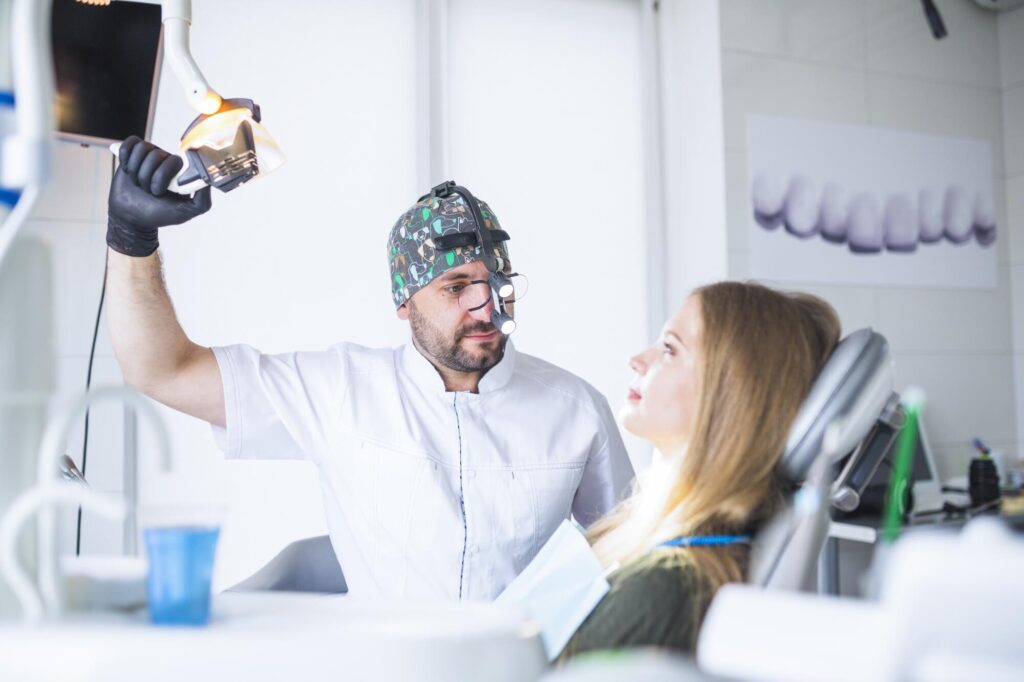Orthodontic care has changed a lot in the past few years. Thanks to new technology, treatments are now faster, easier, and more comfortable for patients. Tools like 3D printing and smart systems that use AI help dentists work more smoothly and give better care. These high-tech updates are replacing old methods, leading to better results and happier patients.
Let’s explore how these cool new tools are making trips to the orthodontist way better.
Understanding Orthodontics
Orthodontics primarily focuses on aligning the teeth and jaws to improve oral health and aesthetics. Orthodontists use tools like braces, clear aligners, and retainers to help move teeth into the right position.
People visit orthodontists for crooked teeth, overbites, underbites, or gaps between teeth. Treatments can take months to years, and options like clear aligners (Invisalign) are less noticeable than braces. Orthodontics also helps improve oral health by making teeth easier to clean.
Innovative Orthodontic Technologies
New technologies in orthodontics are making treatments faster, more comfortable, and more effective. Here are some of the most exciting innovations:
Digital Impressions: A Game Changer in Orthodontics
Getting braces used to mean biting down on messy, goopy molds to make an impression of your teeth. It wasn’t fun and often felt uncomfortable; today, things are much easier.
Orthodontists now use special digital scanners that take clear pictures of your teeth and gums. These scans are quick, painless, and more accurate. With better images, orthodontists can create treatment plans that fit your mouth more perfectly and help you get the best results faster.
3D Printing: Customization at Its Best
3D printing is now one of the coolest tools in orthodontics. It lets orthodontists quickly create custom-made appliances like retainers, braces, and clear aligners.
Using digital scans of a patient’s mouth, they can design and print devices that fit just right. These custom fits help treatments work better and feel more comfortable. With 3D printing, patients often get better results faster, and the whole process becomes smoother for everyone.
Artificial Intelligence: Enhancing Treatment Planning
Artificial Intelligence, or AI, is becoming a big part of how orthodontists plan treatments. It helps doctors look at lots of past cases to figure out what might work best for each new patient.
With AI, orthodontists can create treatment plans faster and make them more personal. Some programs can even show a preview of what your smile might look like when treatment is done. When patients can see what to expect, they often feel more confident and excited about the process.
Remote Monitoring Technologies
Remote monitoring is changing the way patients and orthodontists stay in touch between visits. With the help of phone apps and smart devices, orthodontists can now track how teeth are moving even when the patient isn’t in the office.
Some braces or aligners have tiny sensors that send updates straight to the orthodontist. This helps catch problems early and keeps treatment on track.
It also reminds patients to follow their plan, like switching aligners on time. Overall, it makes the whole process more flexible and easier for everyone.
Teledentistry: Expanding Access to Care
Teledentistry has become more popular in recent years, especially during the pandemic. It lets patients get orthodontic care without having to go to the office.
Through online platforms, patients can talk to their orthodontist, ask questions, and get advice on using braces or aligners. This makes it easier for people who live far away or have trouble getting to appointments to still get the care they need. Teledentistry is helping more people stay on track with their treatment, no matter where they are.
The Future of Orthodontics: Embracing Integrated Technologies
The best aspect of new orthodontic technologies is their integration. By combining things like digital impressions, 3D printing, AI, remote monitoring, and teledentistry, orthodontists can give patients a smooth, quick, and easy treatment experience.
Looking ahead, we can expect even more improvements, using big data and smart technology to make treatments even better. Personalized orthodontics is becoming more possible, meaning treatments will be even more effective and comfortable. For anyone looking for orthodontic care, finding options such as family orthodontics in Louisville will help them take advantage of these cutting-edge technologies.
Current Limitations
While orthodontic technologies are advancing quickly, there are still some limitations to consider:
Cost
New orthodontic technologies, like 3D printing and AI tools, can be expensive. This makes it harder for some patients to afford these treatments. While the benefits are clear, the cost of these advanced methods can still be a barrier for many people.
Treatment Time
Even with faster and better technology, some treatments still take a long time. For example, braces may take months or even years to fully straighten teeth. So, while technology has improved, the time needed for certain treatments hasn’t changed much.
Comfort and Adjustment
Most modern treatments are more comfortable than older ones, but some patients still feel discomfort. Braces and clear aligners can cause soreness, especially during the adjustment phase. Patients may also need time to get used to new devices in their mouths.
Complex Cases
Some orthodontic problems are too complicated for new technology to fix on its own. For example, patients with severe jaw issues or complex bite problems may still need traditional methods.
In these situations, extra treatments or more hands-on care are required. Even with all the new advances, not every patient will have a solution that works perfectly with the latest tech.
Dependence on Technology
While new technology is helpful, depending on it too much can be risky. Mistakes can happen if the technology isn’t carefully used by an experienced orthodontist.
Orthodontists must balance the use of high-tech tools with their own skills and judgment. Over-reliance on technology could lead to less personalized care and mistakes in treatment.
A Transformed Orthodontic Experience
As orthodontic technology keeps improving, it’s changing how patients get care and treatment. With tools like digital impressions, 3D printing, AI, and remote monitoring, treatments are faster, more comfortable, and better suited to each patient. These new technologies make treatments more effective and create a better overall experience.
Ready to see what’s possible? Take the first step toward your new smile today!
Is this article helpful? Keep reading our blog for more.







